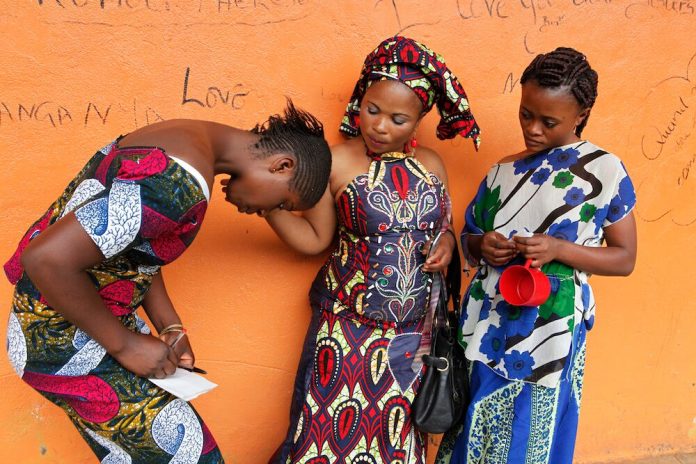(THIS ARTICLE IS MACHINE TRANSLATED by Google from Norwegian)
Audience favorites are rare among the films that win jury awards. And while the jury's criteria may vary, the audience always rewards emotions, stories of shared human experiences and heartwarming films that inspire and move. More than charm the masses, these films are powerful, capable of changing minds and hearts – and often invite reflection and re-evaluation of preconceived notions we have of places and people.
Madeleine Gavins City of Joy won the Public Award during the film festival Movies That Matter in the Netherlands this year, and illustrates in a good way what is mentioned above. The film proves that a documentary can be optimistic, have a meaningful subject and an insightful approach, while exploring a heavy topic. The background story is anything but uplifting: In the Democratic Republic Congo, where voldtekt Gynecologist Dr. Denis Mukwege – nominated several times for the Nobel Prize – works with Christine Schuler Deschryver and American playwright and activist Eve Ensler to establish a center for women who have survived rape and other gender-related violence. They call the center "City of Joy", a name many find both surprising and inappropriate.
Heal
But City of Joy lives up to its name. The film follows the first group of women who spend half a year at the center and complete the training. They undergo a comprehensive process of change: during the six months they receive respite, they work and give voice to their experiences and they gain strength and ownership of their own stories. The goal of these six months is to become leadership figures in their own communities, and to encourage others to speak out and break with the shame and silence that often accompanies sexualized violence. In the process, they do City of Joy to a new community, a beautiful and amazingly joyful sisterhood.
In many ways, these Congolese women and Western audiences live in their own worlds. The suffering these women have been through is difficult to understand and relate to for anyone who has lived in a relatively safe place most of their lives. But telling the story of the City of Joy is telling the world truth in these women's experiences, and invite everyone to recognize this truth through a universal language of emotions and experiences. A hard-to-grasp drama is at the heart of the film. But by showing that dense communities have healing power and highlight the universal need for joy, hope and strength, the film makes it easier for viewers to understand a world so different from their own.
The City of Joy Center offers all these things to these women, too, so they can take it further in their lives and create changes in the community around them. Sexual violence not only affects the women who are exposed to it, but also destroys the very fabric of the communities in which they live.
exploitation

The perpetrators of the abuses are impoverished men who join militia groups, presumably to protect certain territories. But joining a militia is first and foremost a means of survival. These men have nothing to lose. They are part of a conflict that has been going on for at least 30 years and is really a financial war. While the chaos continues unabated – driven by poverty and misunderstanding – companies from all over the world are making themselves rich in the conflict. They are extracting Congo's rich mineral resources – a exploitation of non-renewable resources that give nothing back to the society that would benefit from them.
The film uncovers the many layers of this reality by juxtaposing the personal stories of both the founders of the City of Joy and the women participating in the program on the one hand, and the big picture of the country on the other. This underlines the country's trauma, but more importantly: that hope lives and that change is possible.
Getting to know some of the women's traumatic experiences is one thing, but the real strength of the film lies in showing what happens to these women in the training process: how a person can change from barely being able to talk, to finding strength and meaning in life again. Here, Jane's story stands out: She is a skinny woman who lost everything except life, and is the only one who stayed in the City of Joy after the six-month period was over, to dedicate herself to helping newly arrived women at the center.
The power of the collective
The women's body language and facial expressions, the dance, the African patterns on their clothes, the strong emotions and the hearty laughter – all create an atmosphere of sisterhood and strength, and reminiscent of films like Solar Mamas og What Tomorrow Brings.
Africa has hardly been portrayed through a lens of happiness. But City of Joy manages to tell about a painful piece of recent African history with a hopeful look. It causes viewers not only to open their hearts, but also to realize that pain and joy can exist side by side in both people and countries, and that all people – if given the chance – would choose to speak the universal language of associating bond and play, find hope and strength. And breaking the circle of offense.
- The film is available in full on Netflix.
- Read more about the film: The film's website
- More documentaries can be found here.






